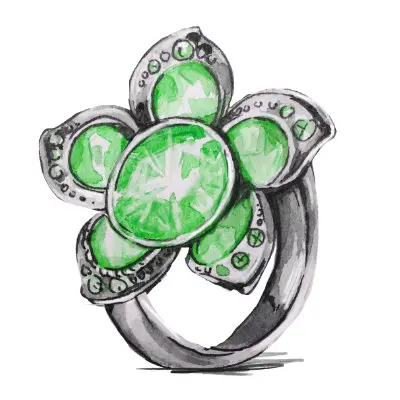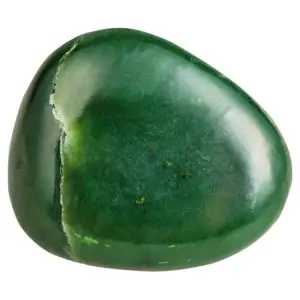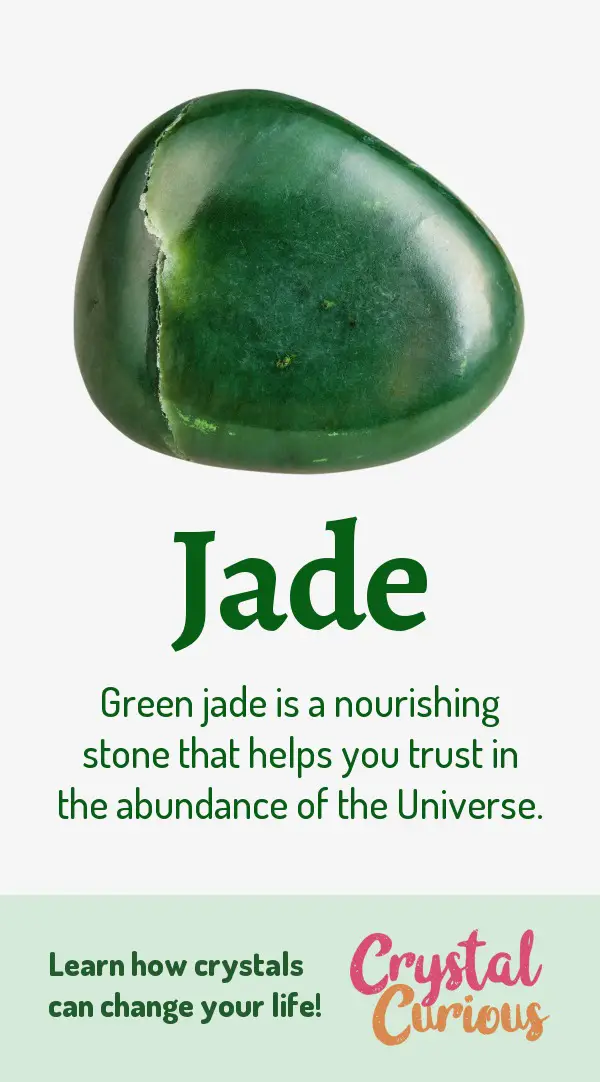Healing Properties of Jade
Top 3 Benefits of Green Jade
- Prosperity and abundance
- Health, wellness, and vitality
- Happiness and wellbeing
Jade comes in many colors, but we will discuss green jade here as it is most common and sought after.
Green jade is a heart chakra stone. It is nurturing and carries the energy of the Earth and nature. It is a joy to hold and work with, as it radiates harmonious well-being.
Green jade is a stone of abundance. It can help you release scarcity consciousness and relax into the abundant embrace of the Universe. Green jade supports you to believe in and accept your Divine birthright of abundance.
If you tend to spend too much time working or worrying, green jade can help you release the over-thinking and feel the joy and simple pleasures of being alive.
Jade Mineral & Gemstone Information
Jade is two separate minerals referred to by the same name: Jadeite and Nephrite. This is due to historical confusion given their similar appearance. They tend to have similar metaphysical properties as well, so they are generally just grouped together as one stone. Jade has been used since prehistoric times for cutting tools because of its durability and strength.
Jadeite is rarer, more expensive, and comes in a variety of colors including lavender, although the green is the most bright and clear color. High quality green jadeite is a bright apple or emerald green. It is a 6.5 to 7 hardness. It is found in relatively few countries, including Guatemala and Myanmar. Historically, the highest quality Jadeite imported into China was called Imperial Jade and reserved for royalty.
Nephrite jade is more common and less expensive and is found in many countries, including China. It has a hardness of 6-6.5 and comes in shades of dark green, pale green, cream, and white. Nephrite tends to have a less intense color than jadeite.
Since jade is popular and well-known, other gemstones are sometimes marketed as a type of jade even though they are not at all. For example, “New Jade” is actually serpentine, a softer stone, and “Mexican Jade” is dyed calcite or travertine (a type of limestone). There are many more examples.
Jadeite is often dyed, so green jade may actually be lower quality white jadeite originally. Dyed jade can fade over time due to the processing it undergoes prior to being dyed. Jade is often finished with a wax coating, which does not damage the stone.
Other gemstones commonly confused with jade include chrysoprase, serpentine, vesuvianite, aventurine, and green garnet.
 Buy Jade
Buy Jade Shop Jade Jewelry
Shop Jade Jewelry







